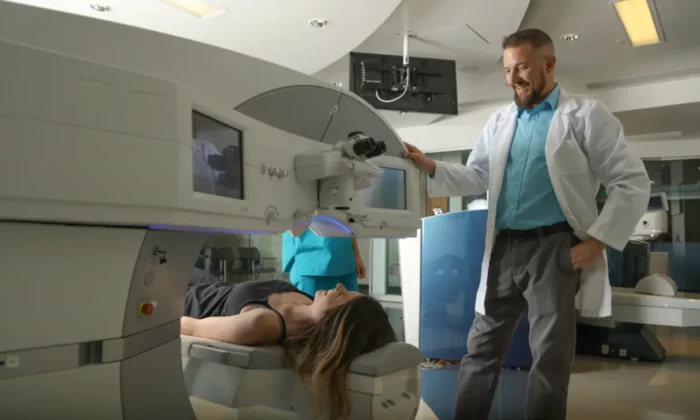
Considering LASIK eye surgery and curious about the recovery time? You’re not alone. One of the most common questions about LASIK is, ‘How long until I can see clearly again?‘ While the promise of clear vision without glasses or contacts is exciting, it’s natural to wonder about the journey post-surgery. In this guide, we’ll walk you through the recovery timeline, compare flap-based to flapless procedures, and set your expectations for the days and weeks after LASIK. Let’s dive in and shed some light on what awaits you after the procedure!
Contents
LASIK, which stands for Laser-Assisted In Situ Keratomileusis, has revolutionized the field of vision correction. As one of the most popular refractive eye surgeries globally, its primary aim is to reshape the cornea, allowing light to be properly focused on the retina, leading to clearer vision.
The procedure can be broadly categorized into two types: flap-based and flapless.
Choosing between the two typically depends on various factors, including the patient’s eye health, corneal thickness, and lifestyle. Each approach has its unique benefits and considerations, which we’ll delve into further as we discuss the recovery process.
The initial 24 hours post-LASIK surgery is a crucial period, and understanding what to expect can make the experience much more comfortable.
Remember, the first day post-surgery is about giving your eyes the best environment to start the healing process. By understanding what to expect and adhering to the aftercare guidelines, you’re setting the stage for optimal recovery.
When considering LASIK surgery, the choice between flap-based and flapless procedures significantly influences the recovery process. Here’s a comparative breakdown to help you grasp the differences:
| Aspect | Flap-Based LASIK | Flapless LASIK (e.g., PRK) |
|---|---|---|
| Initial Visual Clarity | Rapid improvement; many patients report clear vision the next day. | Gradual improvement over 4 to 10 days before achieving clear vision. |
| Initial Discomfort Level | Minimal to mild discomfort; often subsides within a few hours. | Might experience moderate discomfort which can last a few days. |
| Protection against Rubbing | Essential in the first few days to avoid displacing the corneal flap. | Important, but there’s no flap to displace. Still, avoid rubbing. |
| Sensitivity to Light | Mild to moderate, especially on the first day. | Can be more pronounced and last a bit longer than flap-based. |
| Use of Medication/Eye Drops | Prescribed drops for a week or so to prevent infection & inflammation. | Might need medicated drops for a more extended period. |
| Return to Normal Activities | Most daily activities can be resumed in a couple of days. | Might need a slightly longer break, especially if visual clarity is crucial. |
| 100% Recovery Time | 1 week to 1 month for complete healing and stabilization. | Similarly, 1 week to 1 month, but the initial visual recovery is slower. |
It’s essential to remember that individual experiences may vary. Regardless of the chosen procedure, adhering to post-operative instructions and regular follow-up visits with the surgeon ensures a smoother recovery.
Day 1:
Day 2:
Day 3:
Day 4-6:
Day 7:
Remember, during the entire week:
By adhering to these guidelines and being observant of any changes, you’re ensuring a successful and hassle-free recovery from your LASIK surgery.
After undergoing LASIK surgery, patients typically experience a series of symptoms as part of the healing process. While these are usually temporary, being aware of them and knowing how to manage them can make the recovery journey more comfortable.
It’s essential to remember that while these symptoms are common, every individual’s recovery journey might be slightly different. Always keep an open line of communication with your ophthalmologist and report any out-of-the-ordinary experiences.
For many patients, the initial recovery phase post-LASIK is rapid. You might wake up the day after surgery to find your vision noticeably improved. In the ensuing days, many of the immediate post-operative symptoms, such as mild discomfort or blurriness, begin to diminish. By the end of the first week, many patients are back to their regular activities, enjoying their new-found clarity.
However, the body’s healing process is intricate and doesn’t operate on a fixed timetable. While the glaring symptoms subside early, subtle changes can still occur in the eye. For some, vision can fluctuate slightly or stabilize over a period of weeks. The cornea, where the surgery takes place, undergoes microscopic healing, and the eyes might continue to adjust for several weeks.
By the one-month mark, the majority of patients have realized the full benefits of the surgery, with their vision stabilized and any residual symptoms diminished. However, this doesn’t mean you should skip post-operative appointments. Regular check-ins with your surgeon ensure that any potential complications are identified and managed promptly.
In conclusion, while the transformative effects of LASIK are evident almost immediately after the surgery, the journey to full recovery is a gradual process that might span a few weeks.
Navigating the world with clear, unaided vision is a life-changing experience that many have already embraced thanks to LASIK surgery. With modern technology and expert surgical procedures, the journey to better sight has never been more efficient and promising. However, understanding the recovery process ensures that you can make the most of this transformative procedure without unwarranted surprises. If you’re contemplating taking this leap towards visual freedom, why wait? At EyeMantra, we prioritize your eye health and vision, offering top-notch LASIK procedures tailored to your needs. Experience the freedom of clear vision with Lasik Surgery at EyeMantra. Don’t delay your chance for a clearer tomorrow. Book your free appointment now at 9711116605.